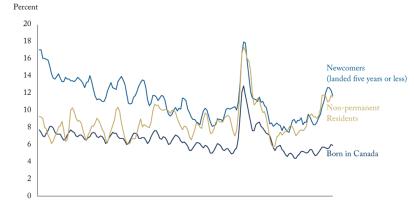Canadian governments are on the verge of the largest infrastructure spending increases in decades. The challenge for policymakers at all levels of governments is to decide whether they should seek more private funding.
In this edition of Graphic Intelligence, we drill down on the largest 100 infrastructure projects in Canada in 2016. Each rectangle in the graphic below represents a project, sized by the total funding in 2016.
Using the tabs, you can colour projects by sector, by source of funds, and by the level of government funding the project. Hover over a rectangle for more information about a specific project.
- Colour by:
Oops! If you are seeing this message, it may be because the chart is not displaying correctly. Try upgrading your browser or enabling Javascript.
A. Jacobs, C.D. Howe Institute | Source: Dachis (2017)
As the graphic shows, most infrastructure spending today is in the transportation or energy sectors, and most of it is publically funded, with provinces contributing the majority of funds.
Unfortunately, government ownership of infrastructure has led to inefficient management, poor project selection, and higher risks on taxpayers disguised by low government borrowing costs. Moving forward, the federal government should use its soon to be launched infrastructure bank to open up opportunities for institutional investors, such as pension plans and insurers, to invest in existing and new infrastructure.
To read more about how the federal government should encourage investment in public infrastructure by institutional investors, read “New and Improved: How to Bring Institutional Investment into Public Infrastructure” by Benjamin Dachis.




